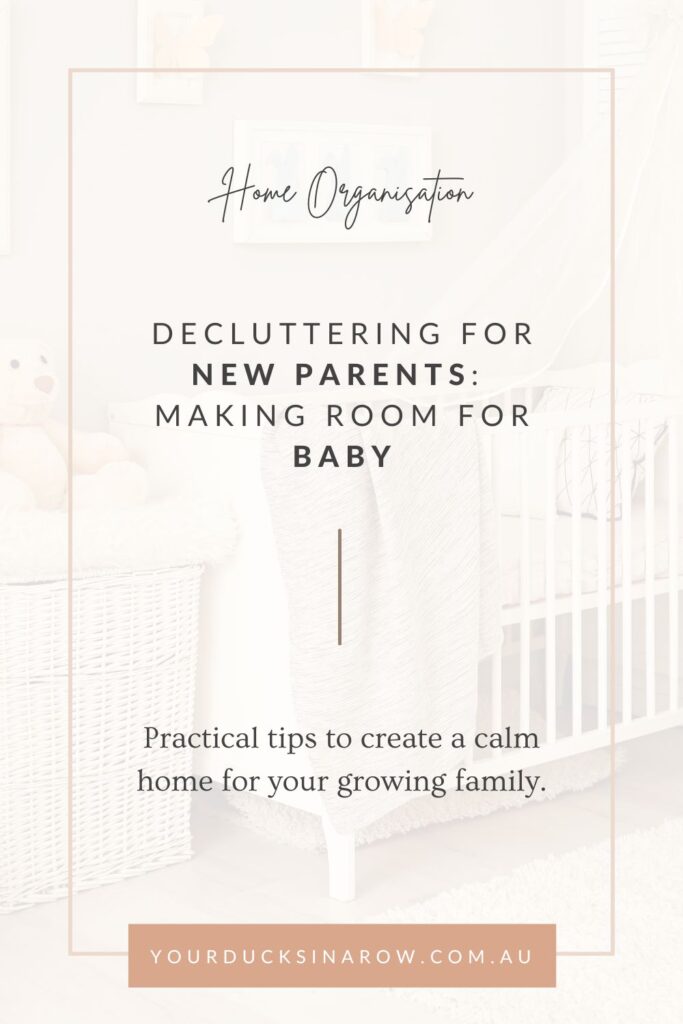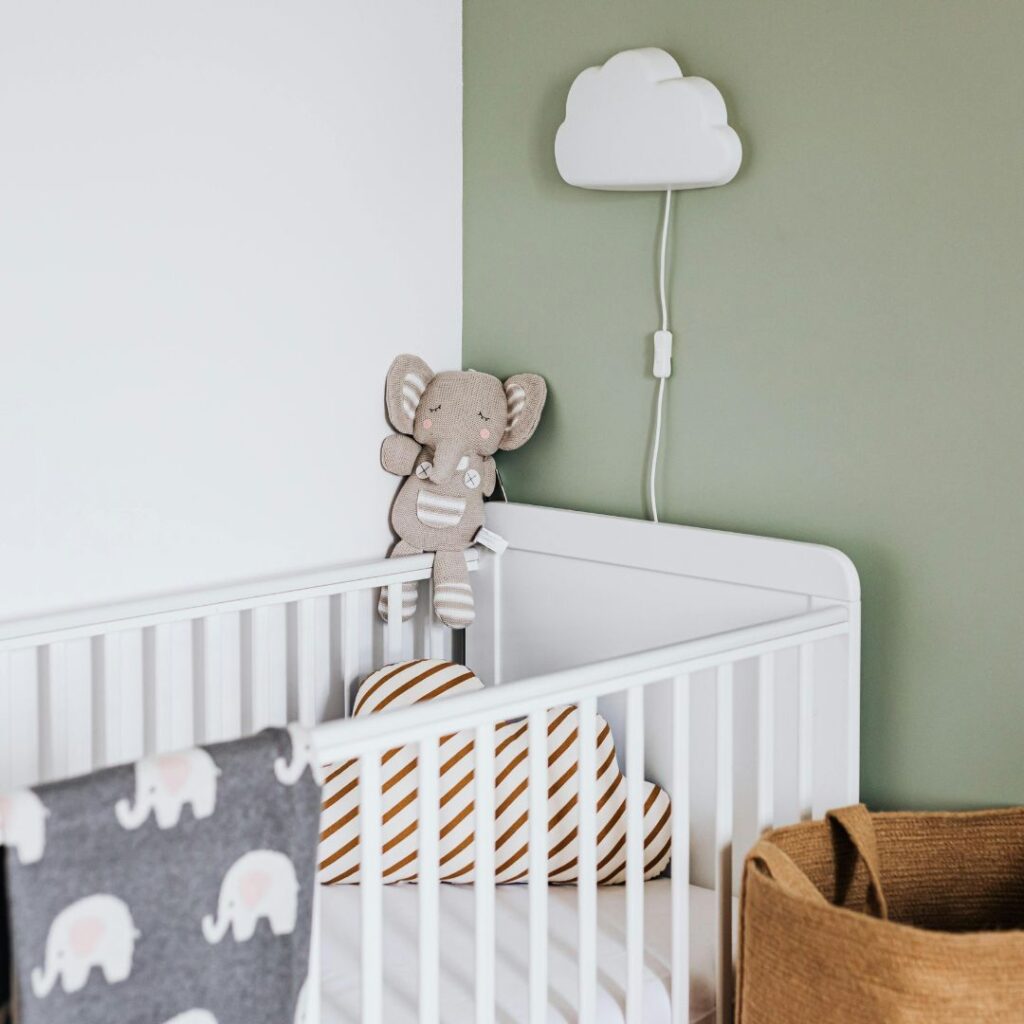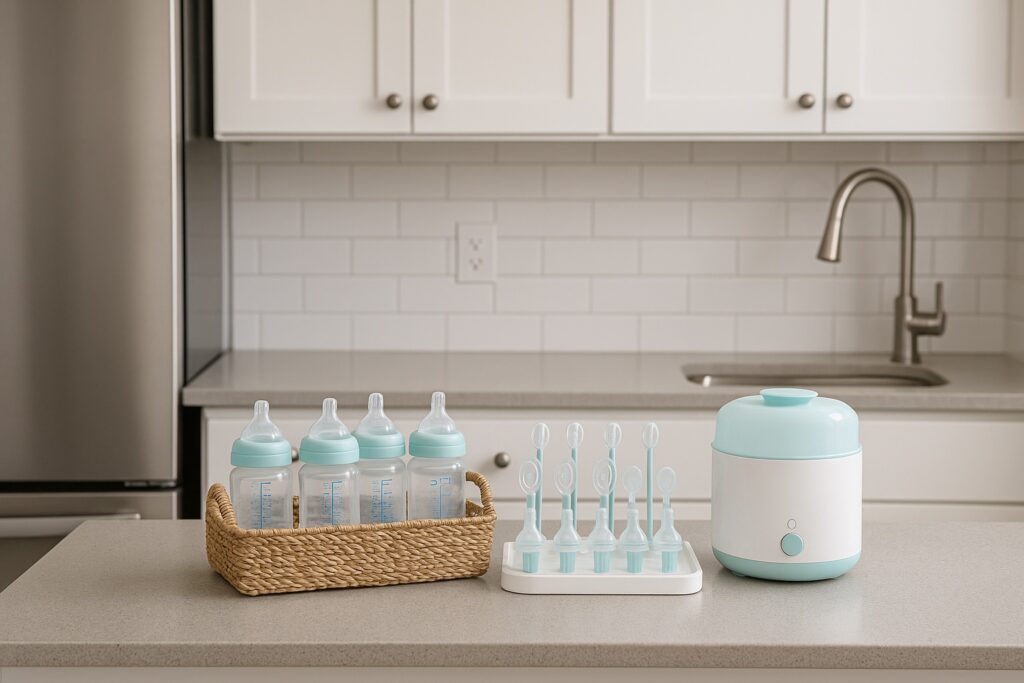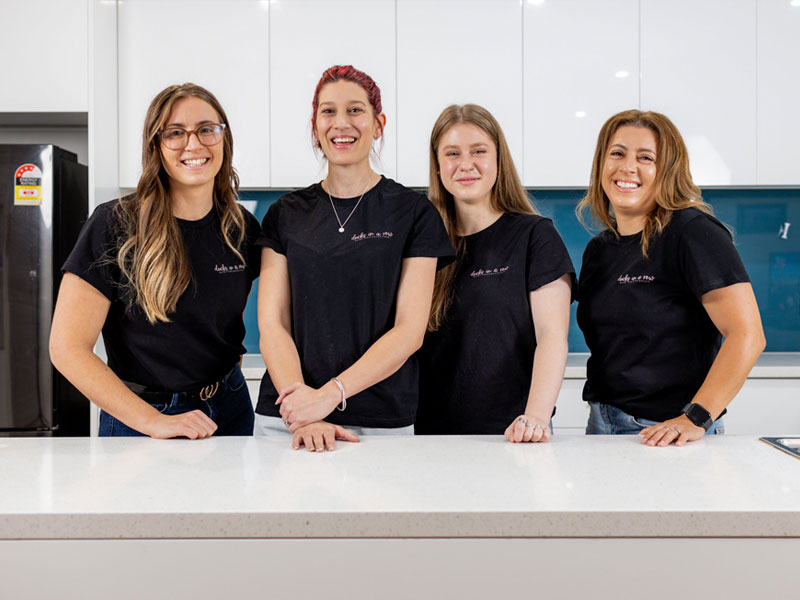Welcoming a new baby is a joyful milestone, but it also means preparing your home for a brand-new chapter of life. Suddenly, you’ll need space for a cot, pram, nappies, bottles, clothing, and countless other baby essentials. Without a plan, the clutter can quickly become overwhelming. The good news is that with thoughtful decluttering, you can create a calm, safe, and functional environment for your little one.
In this guide, we’ll walk you through each step of preparing your home, with practical strategies that suit busy Australian households.

Step 1: Start Early

Many new parents underestimate how much preparation goes into making room for a baby. Starting early gives you time to thoughtfully declutter without pressure.
Why It Matters:
The later stages of pregnancy can be tiring, and once bub arrives, your energy and time will be focused on caring for your newborn. By decluttering well in advance, you’ll feel calmer and more in control.
How to Do It:
- Create a decluttering calendar, assign one room or zone per week.
- Break down larger tasks into smaller, manageable sessions of 30-45 minutes.
- Keep a “donate” box in a handy spot so you can easily add items as you go.
- Ask for help, family and friends are often eager to lend a hand during pregnancy.
Tip: Focus first on high-traffic areas like the bedroom, kitchen, and living room, since these will see the most activity once baby arrives.
Step 2: Declutter Your Bedroom and Wardrobe

Your bedroom will become a sanctuary and a practical space for late-night feeds, changes, and rest.
What to Declutter:
- Clothing: Keep only what fits comfortably and makes you feel good. Store or donate the rest.
- Bedside Tables: Remove non-essentials like stacks of books or old receipts to make room for lamps, burp cloths, and bottles.
- Under the Bed: Use storage boxes with lids to neatly store out-of-season clothes or baby supplies.
Organisation Ideas:
- Set up a baby caddy near your bed stocked with nappies, wipes, bibs, and muslin cloths.
- Invest in slimline wardrobe organisers or fabric shelves to maximise space for baby clothing.
Tip: If your wardrobe feels packed, consider a seasonal clothing swap to free up space—pack away summer dresses in winter and vice versa.
Step 3: Create a Functional Nursery (Even in Small Spaces)

Not every home has a full nursery, and that’s okay. Whether you dedicate a whole room or just a corner, function should always come first.
Decluttering Tasks:
- Remove excess furniture or decor to make way for essentials like the cot or bassinet.
- Clear surfaces for changing supplies and baby monitors.
- Store sentimental decor or fragile items elsewhere until bub is older.
Smart Storage Tips:
- Use vertical shelving for nappies, toys, and books.
- Choose multi-use furniture like a chest of drawers that doubles as a change table.
- Add baskets inside wardrobes for easy sorting of baby clothes and blankets.
Tip: Keep at least one basket or tub in the nursery for items your baby quickly outgrows, you can donate or store them later.
Step 4: Organise the Kitchen for Baby Feeding

The kitchen will be busier than ever, especially if you’re bottle-feeding or expressing milk. Preparing now ensures stress-free mealtimes.
Decluttering Tasks:
- Toss expired pantry items and group similar foods together.
- Clear a cupboard or drawer specifically for baby bottles, formula, and sterilising equipment.
- Reduce the number of unused gadgets cluttering benchtops to create space for baby gear.
Organisation Ideas:
- Use labelled baskets inside cupboards for baby feeding supplies.
- Keep a drying rack or mat near the sink for bottles and teats.
- Dedicate a section of the fridge for baby milk or future homemade purées.
Tip: Invest in drawer dividers or small tubs for teats and dummies to prevent losing them in deep drawers.
Step 5: Prepare the Bathroom

Baby bath time is special but requires thoughtful organisation to avoid stress.
Decluttering Tasks:
- Clear expired or unused toiletries to make space for baby products.
- Use a portable bath caddy for items like washcloths, shampoo, and towels.
- Store bulky baby baths upright in a linen closet or laundry when not in use.
Organisation Ideas:
- Install over-the-door hooks for extra towels.
- Use stackable bins under the sink for baby lotions and spare nappies.
- Keep bath toys in a mesh bag that can hang to dry, preventing mould.
Tip: Always store chemicals and adult toiletries up high, your baby will soon be mobile, and safety is paramount.
Step 6: Tidy Up the Living Room

The living room often doubles as a play area and a place for parents to relax. Clutter-free zones make life easier and safer.
Decluttering Tasks:
- Remove fragile or sharp items from low shelves and tables.
- Reduce decorative clutter to make space for baby gear like play mats.
- Consider donating furniture that makes the space cramped.
Organisation Ideas:
- Use soft fabric baskets for storing toys, easy for daily clean-up and safe for little hands.
- Choose a coffee table with hidden storage for toys, blankets, or books.
- Add a stylish storage ottoman for nappies and wipes you’ll need during the day.
Tip: Store baby toys in rotation. Keeping only a few out at once prevents overwhelm and makes the room easier to tidy.
Step 7: Manage Paperwork and Miscellaneous Clutter

With baby comes extra paperwork: medical forms, Centrelink documents, health checks, and more. Without a plan, it piles up fast.
Decluttering Tasks:
- Shred or recycle outdated documents.
- Sort papers into categories like “Baby Health”, “Bills”, and “Personal Records”.
- Switch to digital billing and medical notifications where possible.
Organisation Ideas:
- Use a two-tier file organisers, one level for urgent paperwork, another for long-term storage.
- Label a binder specifically for baby records and keep it in an accessible spot.
- Keep a small inbox tray in the kitchen or office to prevent piles spreading across the house.
Tip: Set aside 10 minutes each week to file papers before they get out of hand.
Step 8: Set Up Maintenance Systems

The real key to long-term organisation is maintenance. Without simple systems, clutter will creep back in quickly.
Daily Systems:
- Do a 10-minute tidy each night, returning items to their homes.
- Reset the nappy caddy and top up supplies before bed.
Weekly Systems:
- Reassess hotspots, like the coffee table or kitchen bench, that tend to attract clutter.
- Rotate outgrown baby clothes weekly into a labelled bin for storage or donation.
Seasonal Systems:
- Review toys and clothing every 3-4 months as your baby grows rapidly.
- Refresh your storage setup if you notice areas becoming cramped.
Tip: Make tidying a family effort, even small kids can help pop toys back in baskets as they grow.
Decluttering before a baby arrives isn’t about creating a perfect, Pinterest-worthy home. It’s about making your home work for you, safe, functional, and calm so you can focus on bonding with your newborn.
If it feels overwhelming, you don’t have to do it alone.
Book your free consultation with Ducks in a Row Home Organisation, and we’ll help you create a baby-ready home that’s practical, beautiful, and tailored to your family’s needs.


